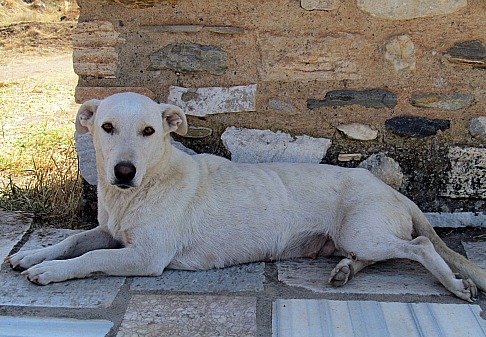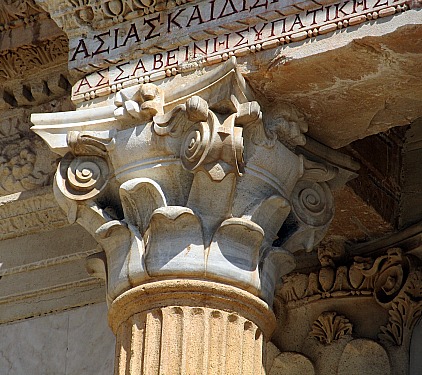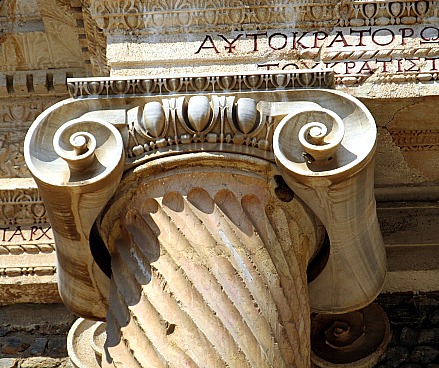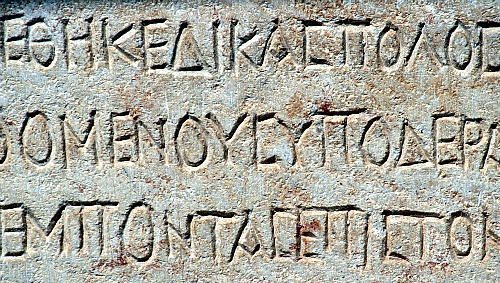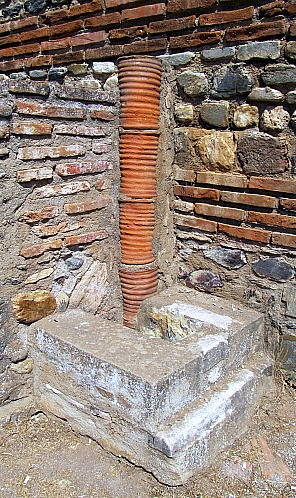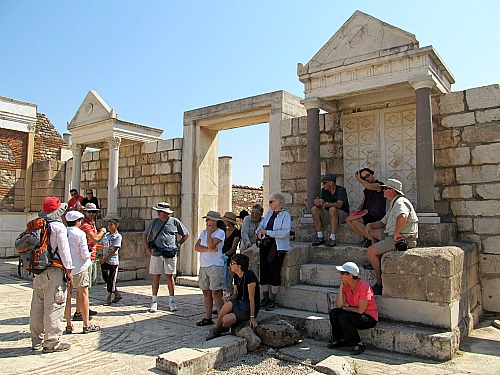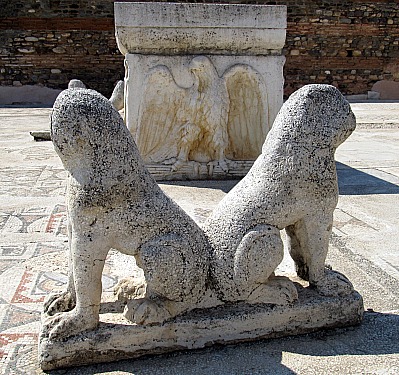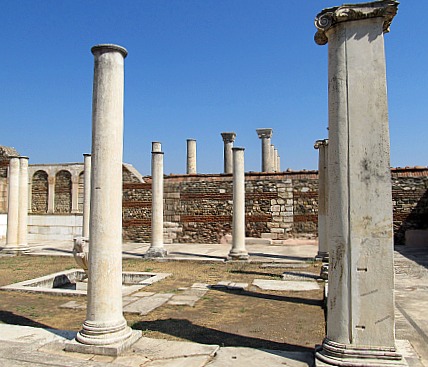After our carpet-buying experience at the Desen Halicilik Co-op in Bergama, we struck out for Izmir, arriving there early evening, a bit later than we had planned. But I’ll get back to Izmir. First, we’re jumping to Sardis, where we visited the morning after our arrival in Izmir.
It was bright and early when we struck out for ancient Sardis, about an hour’s drive from Izmir. Since we were taking off before the stores opened, Gino and I did not have a chance to check the stores for a battery charger. We were still holding out hope of finding one, although by now Gino was using the video camera very sparingly. It wouldn’t be long until the juice was totally gone.

The highway to ancient Sardis took us through pleasant scenery: olive groves, tobacco fields, and vineyards of sultanas (those large luscious raisin grapes).
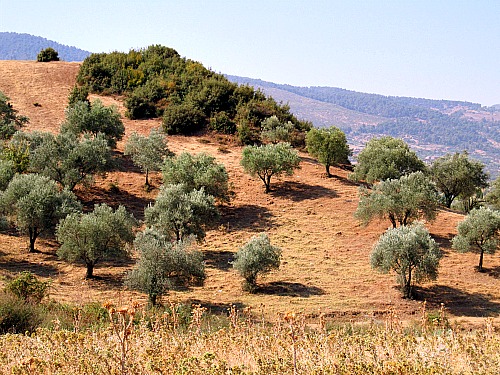
Sardis is now an archaeological site sprawling on either side of the Ankara highway. But as the capital of the Kingdom of Lydia, it was one of the most important cities of the Persian Empire.
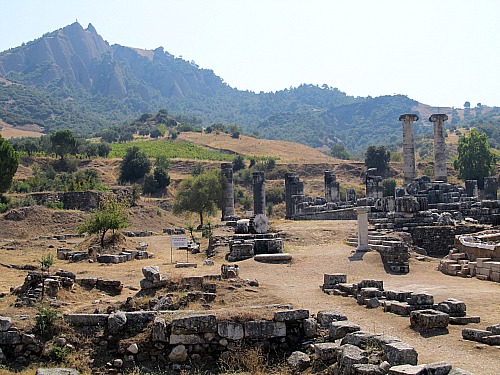
Its most renowned claim to fame was one of its monarchs, King Croesus, the first leader to mint coinage. Once one of the wealthiest persons in the world, he lends his name to the expression, “rich as Croesus.”
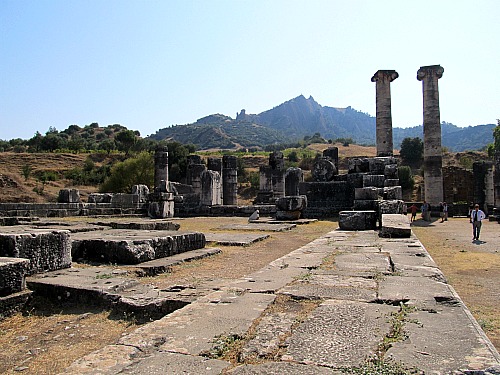
I really liked Sardis. It may have been my favorite place. The setting was so peaceful. Tucked away from the road, it sits among gently undulating hills dotted with gray-green olive trees and patches of vineyards, framed by the craggy Tmolus mountains.


We spilled out of the bus and started walking towards the excavations, sidestepping scraggly chunks of marble strewn over the ground. Enormous columns standing in a clump across the field drew me like a magnet. It turned out to be the Temple of Artemis. Known as Diana in Roman mythology, Artemis is the Goddess of the hunt, of wild animals, and wilderness. She’s my favorite Goddess.

The Temple of Artemis
Commissioned by Alexander the Great in 300 BCE, this great temple to Artemis was built by the Greeks. In its hey day, it was the fourth largest Ionic temple in the world. I was happy to be standing in its sparse shadow over 2,000 years later.

There I am, humbled by the magnificence of Artemis
We were practically the only ones there. It was glorious to have the place to ourselves and absorb the tranquility of the setting without the distraction of a noisy crowd.
Standing beneath the mammoth stone columns, I pondered the remains of Artemis’ towering temple. Then I just wandered.

Colossal scrolled capitals and chunks of broken columns littered the grounds like elaborate tinker toys scattered by some ancient giant.

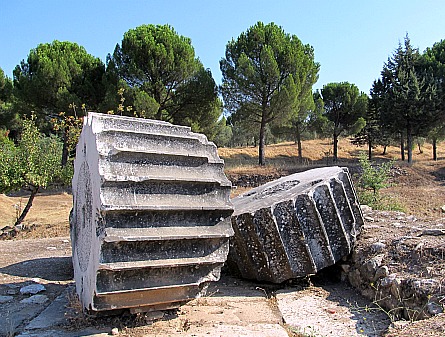

I made Gino stand up on one of the huge columns and pose — Hercules come to life.

Hercules.
Actually, that’s my 60-year old husband! Woo hoo!
While Gino was posing, others gathered around Alp as he explained the history of this sacred site.
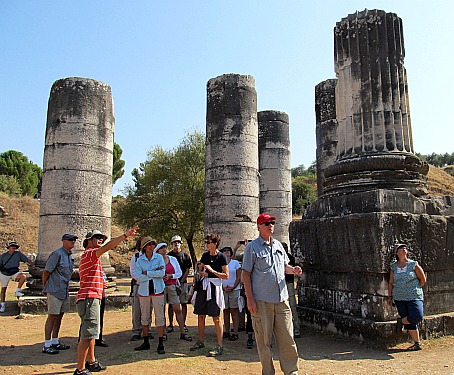

Craig gets creative with his camera

Maybe this is what he saw
Before we left, several of us clambered up the hill behind the temple for an overall view of the vicinity. A 12th-century Byzantine church built atop an even older 5th-century church stood just below, further evidence that this area has been a sacred site for hundreds and hundreds of years.

Nancy and Lynne on the hill overlooking the temple

In the foreground: the remains of a 12th century Byzantine church built atop a 5th-century church


Since the ruins of Sardis are actually scattered throughout the valley, we would have to drive to the other part of the site, located a scant mile away on the other side of the highway.
On our way back to the bus, I noticed a dog lying at the entrance to the site. He was alone. He appeared content and calm, yet alert — as if he were keeping vigil. Then it struck me. Of course. Artemis’ constant companion is a dog.
